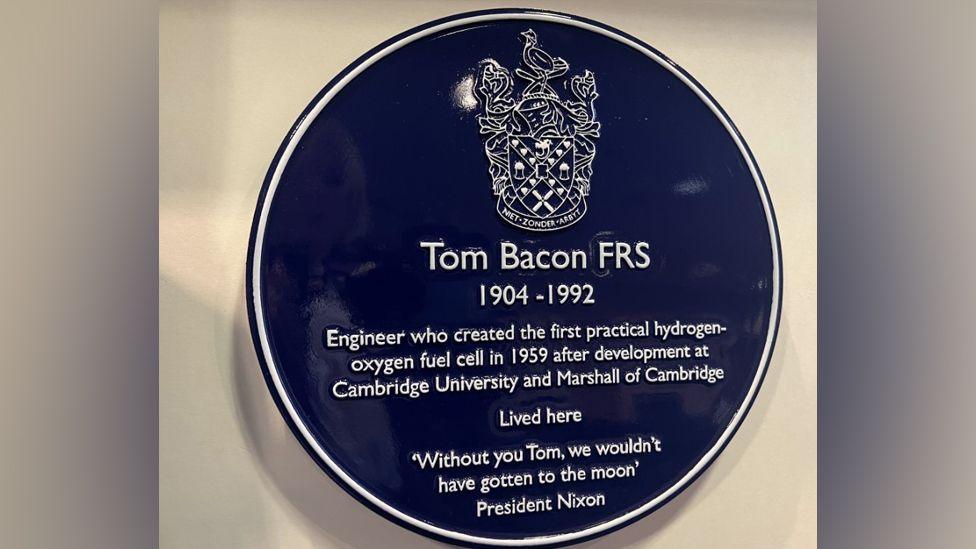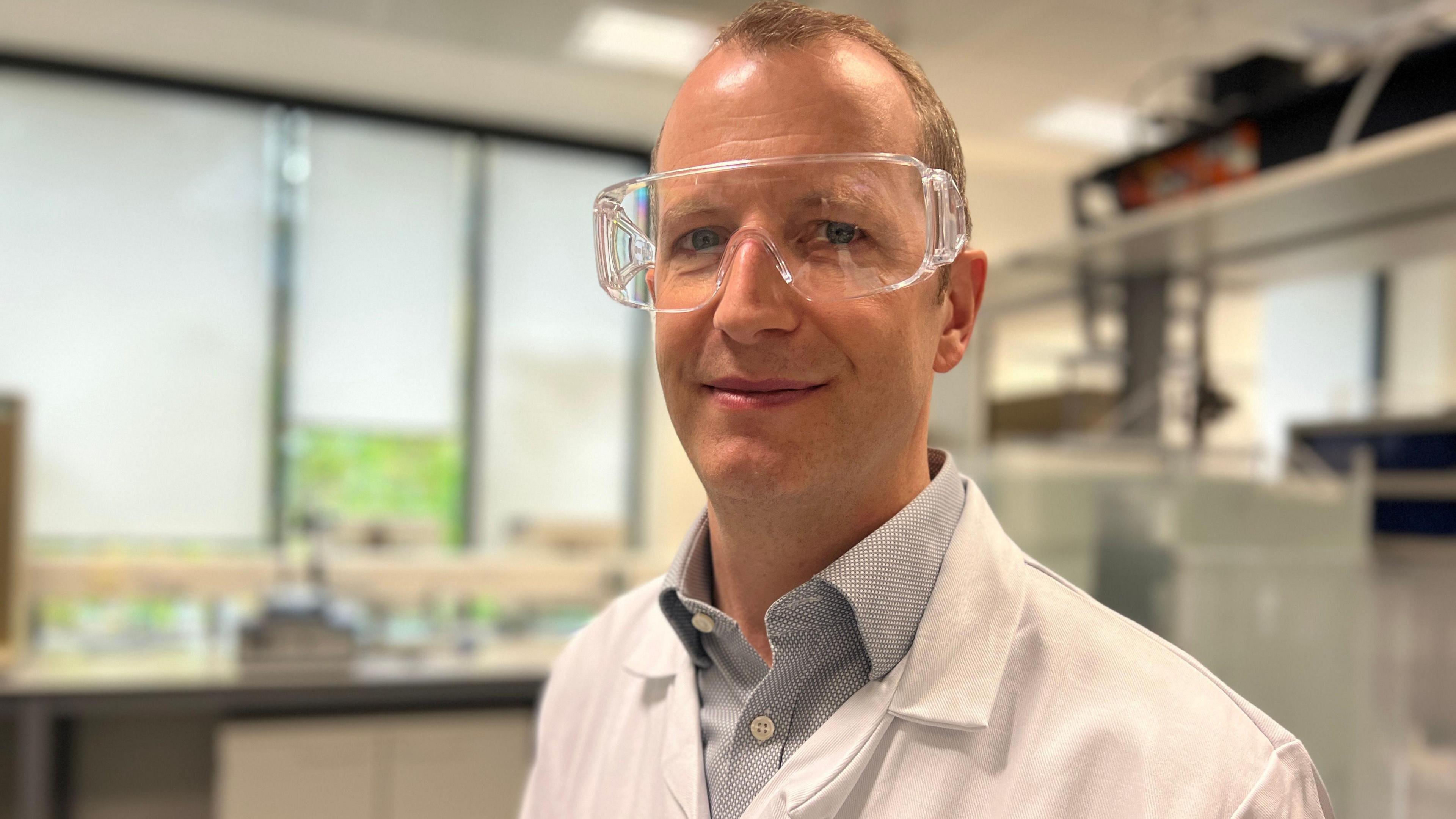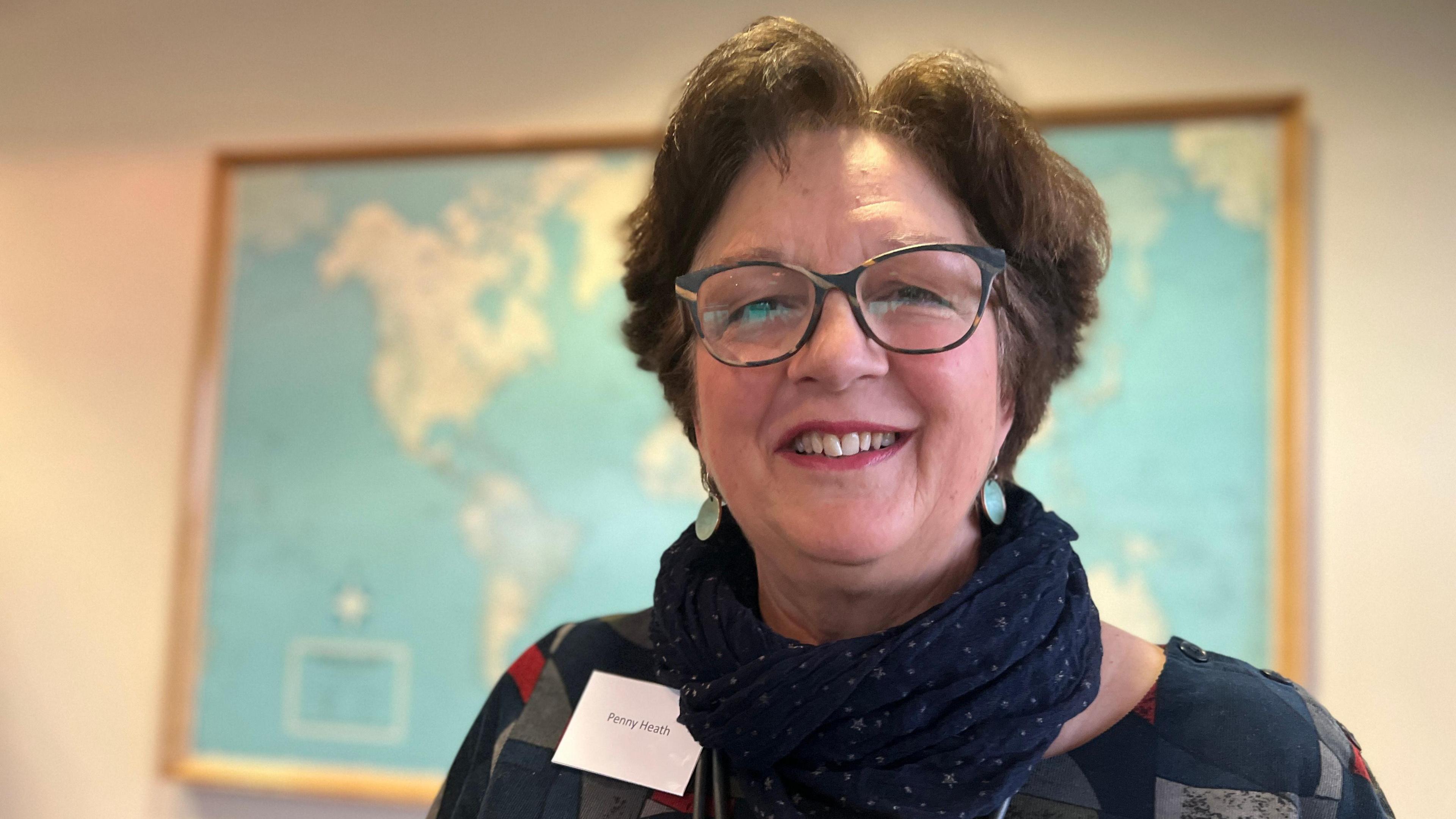Blue plaque for 'man on the Moon' scientist

Engineer Tom Bacon developed the first practical working hydrogen-oxygen fuel cell
- Published
An engineer has been recognised with a blue plaque for his role in helping to put mankind on the Moon.
Tom Bacon, a Cambridge engineer, developed the first practical working hydrogen-oxygen fuel cell which provided some of the electricity to the Apollo missions and Apollo 11, that landed the first man on the moon in 1969.
On meeting him, American President Richard Nixon said: "Without you, Tom, we wouldn’t have gotten to the moon."
The plaque, part of a scheme run by civic charity Cambridge Past, Present & Future, was unveiled at Marshall of Cambridge - a technology and engineering company - on Thursday afternoon.

The plaque was unveiled on Thursday and includes a quote from then-President Nixon
Francis Thomas Bacon (known as Tom) was born in 1904 in Billericay, Essex.
He studied mechanical sciences at Trinity College, Cambridge, in 1925.
He developed the fuel cell at Cambridge University and later in partnership with Marshall.
He had worked on the idea of the possibility of storing energy in the form of hydrogen and releasing it as electricity for many years.
A fuel cell is a device that produces electricity from the chemical reaction of a fuel and an oxidant which, unlike a battery, are supplied continuously from outside the cell.
Bacon worked with a team of engineers and chemists at Marshall to develop a system which was demonstrated to the press in 1959.
It was considered perfect for powering NASA’s spacecraft as it was lighter and much less bulky than batteries of the time and more efficient than 1960s solar panels.
Hydrogen and oxygen were already going to be on board the spacecraft for use as rocket fuel and the only waste product from the reaction was water which was used as drinking water for the astronauts.

Jethro Akroyd said Bacon's cell allowed the Americans to reach the Moon
Dr Jethro Akroyd, a senior research associate at the university's department of chemical engineering and biotechnology, said: "Tom invented the fuel cell that allowed the Americans to reach the moon.
"This is a fantastic achievement if you look at what Tom did in a modern context. He invented a device that provided a portable source of power - it was fuelled by hydrogen and oxygen and its only emission was water.
His work was "pioneering and inspirational", he said.
"He was a person who was truly ahead of their time."
Dr Akroyd added that students of today found Bacon's work hugely motivational.

Penny Heath, the chair of the blue plaque committee, said: "It's our delight to make this very significant person better known"
Prof Clemens Kaminski, head of the department, said it was right that Bacon should be celebrated.
"He was a modest man who was incredibly dedicated to one idea - and he persevered it all his life.
"He tried to get it to work and he did - eventually."
He added: "The idea of the fuel cell that he developed had been around a long time, but nobody could make one that was useful. He was a fantastic engineer - he had the skills to do it."
The Cambridge City and South Cambridgeshire blue plaque schemes commemorate people and events that have made a significant impact on the area, the UK or, the world. The scheme is run by local charity Cambridge Past, Present & Future.
This was the 41st blue plaque put up since the scheme started in 2001.
Bacon lived in Little Shelford near Cambridge from 1946 until his death in 1992.
Get in touch
Do you have a story suggestion for Cambridgeshire?
Follow Cambridgeshire news on BBC Sounds, Facebook, external, Instagram, external and X, external.
- Published8 June 2024

- Published18 July 2019
